
Bootstrapping a SaaS Business: A Guide to Independent Growth
Bootstrapping a SaaS startup involves launching and growing your software-as-a-service venture without relying on external funding. It’s a journey of resourcefulness, strategic decision-making, and a commitment to organic growth. In this guide, we’ll explore the principles, strategies, and success stories behind bootstrapping in the SaaS industry, offering insights to help you navigate and thrive in the competitive landscape of software entrepreneurship.
What is Bootstrapping?
Bootstrapping is self-funding a business using personal savings, revenue from early sales, and reinvested profits. Unlike traditional startups that seek external investment from venture capitalists or angel investors, bootstrapped businesses maintain full ownership and control from the outset.
How Bootstrapping Connects with SaaS
Bootstrapping is particularly well-suited for SaaS startups due to their business model. SaaS companies typically have lower upfront costs than traditional software companies since they don’t need to manufacture physical products. This makes bootstrapping a viable option for founders looking to minimize financial risk while retaining ownership and autonomy.
Pros and Cons of Bootstrapping
Pros:
Retain ownership and control:
- Bootstrapping allows founders to fully own their company and make strategic decisions without outside influence.
- Founders have the autonomy to shape the direction of the business according to their vision and values.
Maintain autonomy:
- Without the pressure to meet investor expectations, founders have the freedom to pursue their vision and values.
- They can make decisions based on long-term goals rather than short-term financial returns.
Keep profits:
- Since there are no investors to share profits, bootstrapped businesses can reinvest earnings back into the company for growth.
- Founders can allocate resources according to their priorities and invest in areas that drive sustainable growth.
Cons:
Limited resources:
- Bootstrapped startups often need more financial resources, which can restrict growth opportunities.
- They may need help scaling operations, hiring talent, or investing in marketing and product development.
Slower growth:
- With external capital injection, bootstrapped companies may experience faster growth compared to their funded counterparts.
- They may need to rely on organic growth strategies and bootstrap their way to profitability, which can take time and patience.
Increased risk:
- Bootstrapping requires founders to take on greater personal financial risk since they are solely responsible for funding the business.
- In the event of failure, founders may face significant financial losses and personal setbacks.
Strategic Steps for Bootstrapping Success
Identify your niche:
- Perform market research to pinpoint a target audience characterized by underserved demands and limited competition—zero in on a distinct niche where you can offer unparalleled value and differentiate yourself from competitors.
Build a minimum viable product (MVP):
- Develop a basic version of your SaaS product with essential features to validate market demand and gather feedback.
- Prioritize features based on customer needs and build incrementally to minimize development costs and time to market.
Leverage free tools and resources:
- Utilize cost-effective software tools and resources to reduce expenses.
- Benefit from open-source software, free trials, and freemium models to access vital tools and services without substantial initial investment.
Focus on organic growth:
- Allocate resources to content marketing, social media interaction, and search engine optimization (SEO) to attract and retain customers without depending on paid advertisements.
- Develop valuable content, interact with your audience on social media platforms, and enhance your website’s search engine optimization to boost visibility and attract traffic.
Cultivate a community:
- Build relationships with early adopters and foster community around your product to drive word-of-mouth referrals and loyalty.
- Encourage user-generated content, facilitate discussions, and provide support to create a vibrant community of advocates and brand ambassadors.
Refine your pricing strategy:
- Experiment with different pricing models and tiers to find the optimal balance between value and affordability for your target market.
- Consider offering flexible pricing options, such as monthly subscriptions, annual plans, or tiered pricing based on usage or features.
Embrace customer feedback:
- Proactively seek customer feedback and incorporate it into iterative improvements for your product over time.
- Establish a feedback loop to collect insights, prioritize feature enhancements, and address pain points, thus enhancing the overall customer experience.
Scale strategically:
- Gradually expand your operations and allocate resources to growth initiatives that align with your long-term vision and goals.
- Focus on investing in areas crucial for sustainable growth, including product development, customer acquisition, and infrastructure enhancements.
Steps to Bootstrapping Your Startup
Assess your financial situation:
- Determine your available capital to invest in your startup and create a budget.
- Evaluate your finances, savings, and other funding sources to understand your financial runway.
Validate your business idea:
- Conduct market research to validate demand for your product or service and identify potential customers.
- Gather feedback from target customers, industry experts, and stakeholders to assess market fit and identify opportunities for differentiation.
Develop your MVP:
- Develop a minimum viable product (MVP) with essential features tailored to meet the needs of your target market.
- Emphasize rapid and cost-effective value delivery to validate your product concept and attract early adopters.
Launch and iterate:
- Launch your MVP to early adopters and collect feedback to iterate and enhance your product.
- Consistently refine your product based on user feedback, market trends, and evolving customer needs.
Focus on revenue generation:
- Focus on revenue-generating activities, such as sales and marketing efforts, to sustain and expand your business.
- Identify various revenue streams, pricing strategies, and monetization opportunities to foster sustainable revenue growth.
Manage cash flow:
- Monitor your expenses and revenue closely to ensure you can cover operating costs and reinvest profits into the business.
- Implement cost-saving measures, negotiate favorable terms with suppliers, and optimize resource allocation to maximize cash flow efficiency.
Case Studies and Success Stories Of Bootstrapping
Buffer:
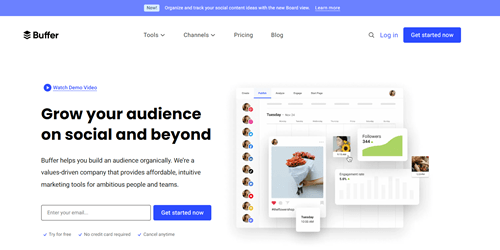
- In 2010, Joel Gascoigne established Buffer as a social media scheduling tool, targeting individuals and businesses to streamline their online presence management.
- Gascoigne opted for bootstrapping, financing the company’s expansion solely through revenue generated from paying customers.
- Despite initial challenges and setbacks, Buffer grew steadily and attracted a loyal user base through its transparency, customer-centric approach, and commitment to remote work.
- Today, Buffer serves millions of users worldwide and generates millions in annual revenue, all without external funding.
Basecamp:

- Basecamp, formerly known as 37signals, was founded by Jason Fried and David Heinemeier Hansson in 1999.
- The company initially focused on web design services but later shifted its focus to project management software with the launch of Basecamp in 2004.
- Fried and Heinemeier Hansson bootstrapped the company, using revenue from consulting services and product sales to fund its growth.
- Since its inception, Basecamp has remained profitable and bootstrapped, emphasizing its products’ simplicity, usability, and customer satisfaction.
Mailchimp:
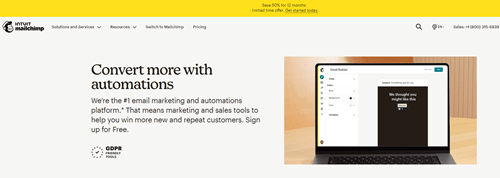
- Mailchimp was started in 2001 as a side project by co-founders Ben Chestnut and Dan Kurzius while they were running a web design agency.
- Initially developed to automate email marketing tasks for clients, Mailchimp quickly gained popularity for its user-friendly interface and innovative features.
- Chestnut and Kurzius bootstrapped the company, reinvesting profits from their web design business to fund Mailchimp’s growth.
- Over the years, Mailchimp evolved into a comprehensive marketing platform, serving millions of users worldwide and achieving a billion-dollar valuation without raising venture capital.
Atlassian:
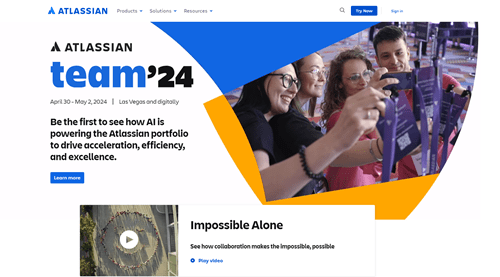
- Established in 2002 by Mike Cannon-Brookes and Scott Farquhar, Atlassian originated as a software development consultancy.
- The company succeeded through bootstrapping, initially supporting its operations via consulting services and product sales.
- Atlassian’s flagship products, such as Jira and Confluence, gained traction in the software development community for their reliability, flexibility, and scalability.
- Despite eventually going public in 2015, Atlassian remained profitable and bootstrapped for over a decade, demonstrating the viability of a sustainable growth model.
GitHub:

- GitHub was founded in 2008 by Tom Preston-Werner, Chris Wanstrath, and PJ Hyett as a platform for hosting and collaborating on code repositories.
- The company bootstrapped its operations, relying on revenue from paid subscriptions and enterprise offerings to fund its growth.
- GitHub quickly became developers’ go-to platform worldwide, revolutionizing how software projects are managed and shared.
- 2018, Microsoft acquired GitHub for $7.5 billion, highlighting its success as a bootstrapped startup and significant impact on the software development industry.
Zapier:
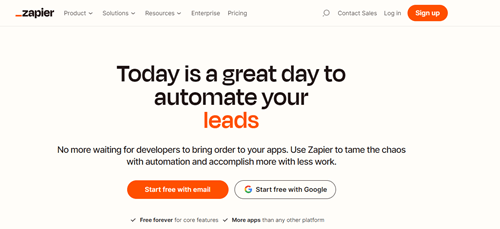
- Founded in 2011 by Wade Foster, Bryan Helmig, and Mike Knoop, Zapier is an automation tool that connects over 2,000 apps.
- The company bootstrapped its operations, initially funding growth through subscription revenue.
- Zapier’s user-friendly interface and extensive integrations appealed to businesses of all sizes, leading to rapid adoption and revenue growth.
- Despite receiving acquisition offers, Zapier chose to remain independent and profitable, showcasing the success of bootstrapping in the SaaS industry.
ConvertKit:
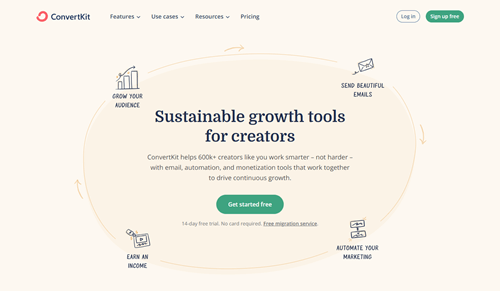
- Founded by Nathan Barry in 2013, ConvertKit is an email marketing platform tailored for professional bloggers and creators.
- Barry bootstrapped the company, investing personal savings and revenue from digital product sales into building and marketing ConvertKit.
- By focusing on the unique needs of its target audience and delivering valuable features, ConvertKit grew to serve thousands of users and generate millions in annual recurring revenue.
- The company’s commitment to transparency, user education, and community building contributed to its success as a bootstrapped SaaS startup.
Trello:
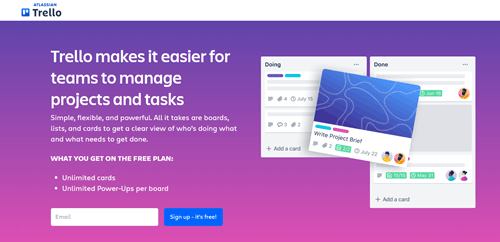
- Joel Spolsky and Michael Pryor launched Trello in 2011 as a collaboration tool centered around boards and cards.
- Initially, the company bootstrapped its development, relying on revenue from consulting services provided by its parent company, Fog Creek Software.
- Trello’s intuitive interface and flexibility attracted users across various industries, leading to rapid adoption and organic growth.
- In 2017, Atlassian acquired Trello for $425 million, illustrating its success as a bootstrapped startup and its significant value in the collaboration software market.
Figma:

- Founded in 2012 by Dylan Field and Evan Wallace, Figma is a collaborative interface design tool used globally by designers and teams.
- The company bootstrapped its development, initially funding operations through revenue from consulting services and early product sales.
- Figma’s cloud-based platform and real-time collaboration features revolutionized the design industry, attracting millions of users and gaining widespread adoption.
- Despite receiving venture funding later in its growth journey, Figma’s early success as a bootstrapped startup demonstrated the effectiveness of organic growth and product-led strategies.
Wistia:

- Brendan Schwartz and Chris Savage founded Wistia in 2006 as a video hosting and analytics platform for businesses.
- The company bootstrapped its operations, initially funding growth through consulting services and product sales revenue.
- Wistia’s focus on providing a customizable, ad-free video hosting experience resonated with businesses seeking high-quality video marketing solutions.
- The company achieved profitability and sustainable growth without external funding, showcasing the viability of bootstrapping in the competitive video technology market.
FAQs
Is bootstrapping right for every SaaS startup?
Bootstrapping is viable for many SaaS startups, but it depends on the founder’s financial situation, market opportunity, and growth objectives.
How can I bootstrap my SaaS startup with limited resources?
Start by building a minimum viable product and leveraging free or low-cost tools and resources. Prioritize activities that generate revenue and reinvest profits into the business for growth.
Is bootstrapping right for every SaaS startup?
Bootstrapping is viable for many SaaS startups, but it depends on the founder’s financial situation, market opportunity, and growth objectives. While bootstrapping offers autonomy and control, it may need more resources for rapid scalability and expansion in highly competitive markets.
How can I bootstrap my SaaS startup with limited resources?
Start by building a minimum viable product and leveraging free or low-cost tools and resources. Prioritize activities that generate revenue and reinvest profits into the business for growth. Additionally, consider alternative funding sources such as revenue-based financing or strategic partnerships to fuel expansion while maintaining control over your startup.
Conclusion
In conclusion, bootstrapping a SaaS startup offers a path to autonomy, control, and sustainable growth. Entrepreneurs can build successful ventures without relying on external funding by leveraging cost-effective strategies, prioritizing revenue generation, and iterating based on customer feedback. Case studies of companies like Buffer, Basecamp, and Mailchimp demonstrate the viability of bootstrapping in the competitive SaaS landscape. While it may only be suitable for some startups, bootstrapping allows founders to align their business with their vision, iterate efficiently, and ultimately achieve long-term success in the dynamic world of SaaS.




